Timekeeper Invention Club Report
13 Sep 2014, by Taeyoon ChoiTimekeeper Invention Club is an occasional workshop that explores the meaning of ‘personalized time.’ As part of the 2014 LACMA Art + Technology Lab commission In Search of Personalized Time (I—S—O—P—T), the Club contributes to the research and public engagement goals
Taeyoon Choi and E Roon Kang held a Timekeeper Invention Club Workshop in Art + Technology Lab at LACMA on August 30th, 2014. The workshop began with presentations by the artists about their previous projects as well as the impetus for collaborating on I—S—O—P—T.
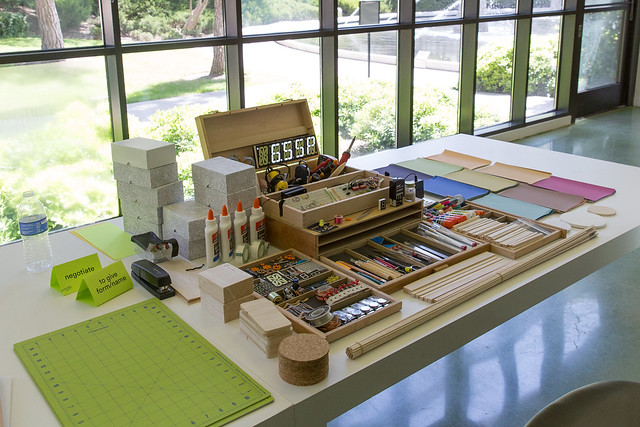
E Roon talked about some of his personal works, including Manual:The Manual(2009), Additive White(2008), sharing his sardonic thoughts on the overly calculated, complicated society. With the projects such as Trash Track(2010), a project at MIT SENSEable City Lab, he pointed out that the socially shared expectation of efficiency often leads to the abject pointlessness.
Taeyoon talked about the sense of displacement that comes with periods of of jet lag. His talk took inspiration from a quote by South Korean artist Haegue Yang: “Jet lag describes the site of love as time in which one is alone, e.g. awake alone in the night, socially less compatible and in this time-space of aloneness one can love and be loved without a division of self and the other.” (Max Andrews, Towards Hague Yang’s Blind Rooms)
Taeyoon showed some drawings inspired by being ‘on time’ and ‘out of time.’ Interested in how time can be treated as a malleable object, Taeyoon also showed timekeeping hardware and storege devices for digital and analog memory that he’s currently working on.
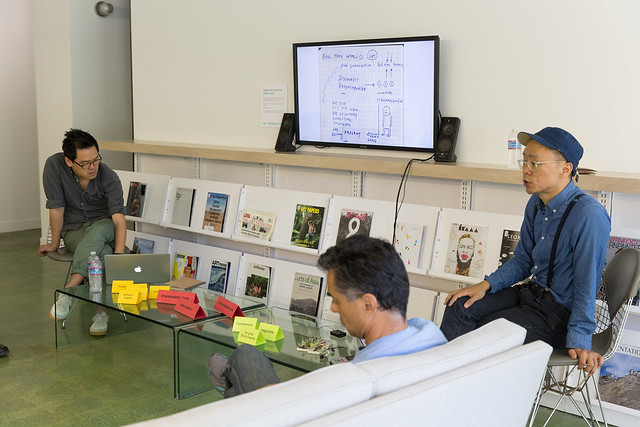
E Roon and Taeyoon also talked about the current state of I—S—O—P—T, their unique research method through experimental events such as Real-Time Film Club and plans for making series of prototypes inspired by critical theory, design and technology. They touched on the variety of ideas orbiting the project, including simultaneity, synchronization, standardization, memory, action, and how to give form to intangible experiences, ideas, and sensations.
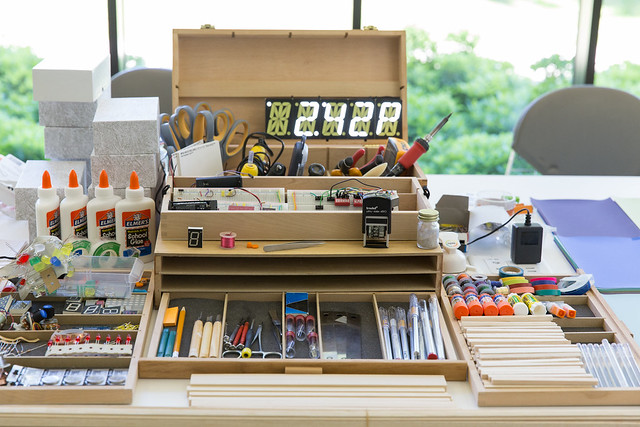
After a brief break, the artists introduced the Timekeeper Invention Kit: a complete package of tools and materials for workshop participants to make their own timekeeper, or ‘personal time machine.’ In the Kit, there were handmade objects: such as a smartphone crafted out of balsa, and electronics such as LEDs, a motor, a paper circuit, as well as variety of construction and drawing material. Everyone received a paper box, vaguely resembling a box for smart phones or jewelry, which prompts users to create a timekeeper that gives form to their personal sense of time.
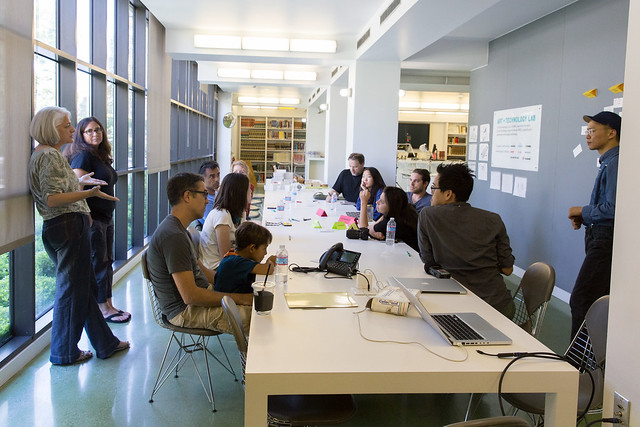
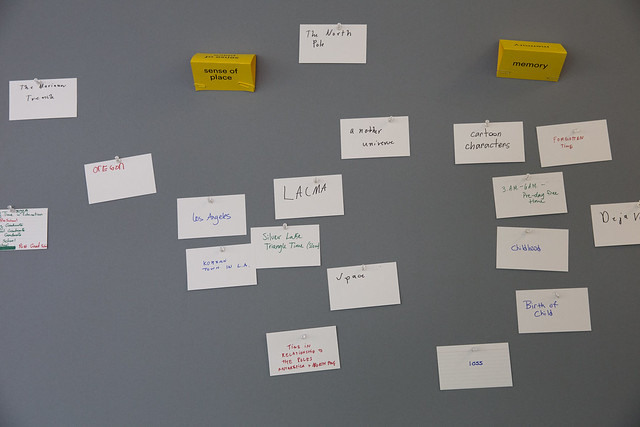
Before building, there was a collective brainstorming among the participants. Using terms and themes that were introduced earlier as anchors, the participants mapped out their thoughts and anecdotes on the wall of the Lab. Then the participants focused on making their own timekeeper, with conceptual and material assistance from the artists. Some of the participants made their timekeeper collaboratively.
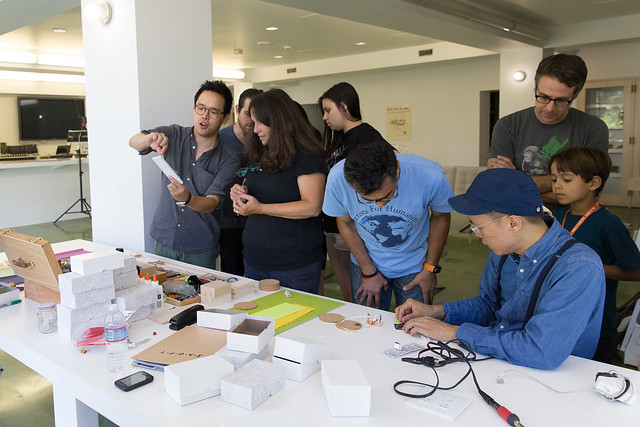
For the workshop’s final phase, participants demonstrated their timekeeper’s functionality and story in front on video for 1 minute. There was a wide range of outcomes. Jake, a young boy, in collaboration with his father Tom Putnam, made a watch that could control the speed of time passing with a knob. The dial reads from “1 to 14th” hour and it’s minute hand and hour hand are glued together, such that the hands are always 90 degrees apart. In the video, he demonstrates spinning the clock hands and guessing where it has landed, simialar to the Wheel of Fortune.
Ann Istrin made a box to count her age, with long wooden sticks standing for a decade and short sticks standing for a year. On her 60th birthday, she will take out 9 short sticks from the box and replace them with a long stick.
Julianne Lee and Maxwell Williams collaborated on a Limited Edition Infinity, an electronic circuit with a dozen of LEDs arranged in shape of infinity sign, connected parallel to a 3 Volt battery. The catch is the battery has been soldered to the circuit, so their ‘infinity’ will last only as long as the energy remains in this one specific battery.
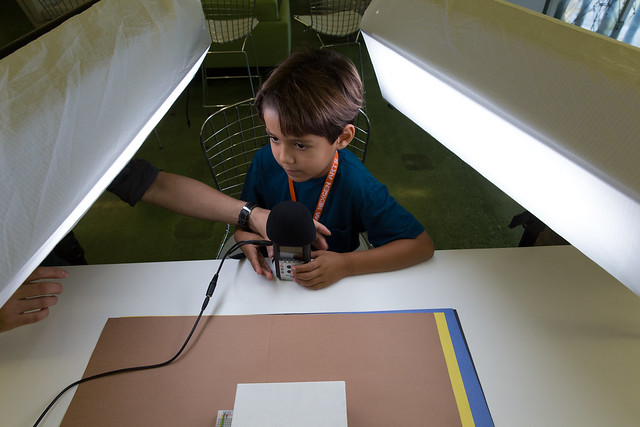
The previous weekend, E Roon and Taeyoon hosted the same workshop at Orbital, a creative coworking space in New York City. Friends and acquaintances participated to make their own timekeepers. Ishac Bertran created a binary clock based on the concept of flip flops (simplest digital circuit with two stable states that can store information) and Ellie Irons created multidimensional timekeeper based on phenology and the academic calendar year. Lauren McCarthy animated a story about lovers frustration with different sense of time, and Dan Phiffer talked about different ways to avoid indication of time on a smart phone.
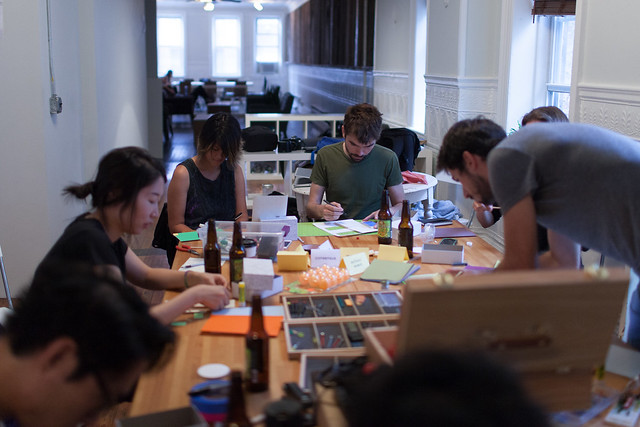
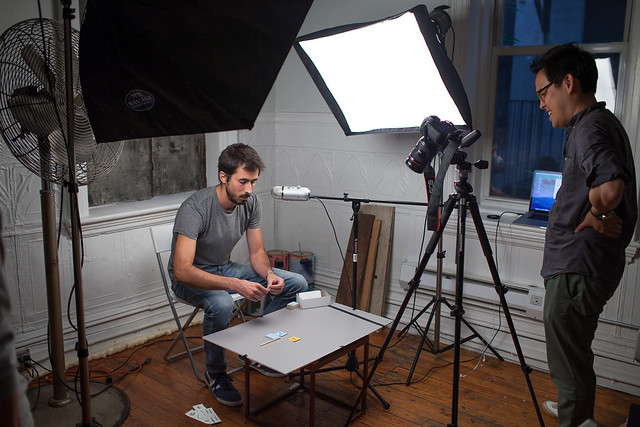
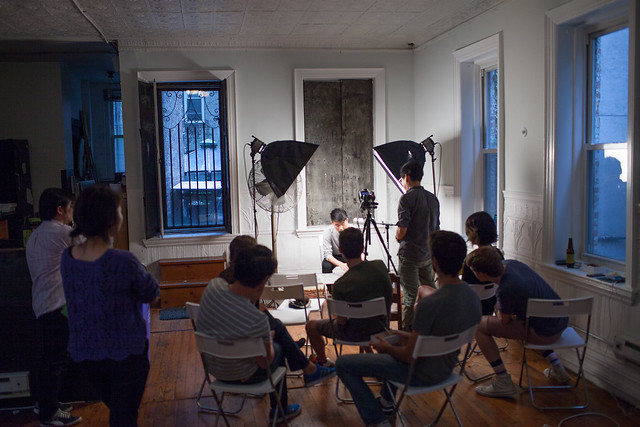
Through this collaborative thought exercise, Taeyoon and E Roon are trying to provide an opportunity to rethink about time and to give form to everyday perceptions of it. Some aspects of the kits and workshop are rooted in their reflection of contemporary obsession in ‘personalization’ of digital devices, as well as in technology’s mediation of communication and senses of ‘presentness.’ By making conceptual timekeepers with common materials, the workshop encourages everyone to craft their own sense of time.
The artists are planning to a third incarnation of Timekeeper Invention Club at Design Exchange Boston on 9.28.2014 and continue to explore personal sense of time and archive short videos of other people’s inventions on the I—S—O—P—T channel.
Timeline of the workshop at Art + Technology Lab, LACMA
- 12:45 First guest
- 1:00 Official beginning of the workshop
- 1:15 Workshop begins/ Introduction to the project/ Participants say Hello
- 1:30 Roon presentation
- 2:00 Taeyoon presentation
- 2:30 break
- 2:45 Timekeeper Invention Tool Kit
- 3:00 Collective brainstorming
- 3:30 Individual project
- 4:00 First project documentation
- 5:30 Final project documentation






